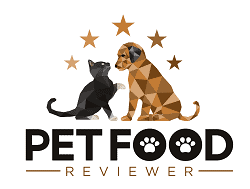What Is Glycerin?
Glycerin, which is also known as glycerine, glycerol, and E422, is the non-technical term for propane-1, 2, 3-triol.
While glycerin is found naturally as a part of triglyceride fats, it is not found naturally by itself, which has led to many to label it as an unnatural ingredient.
Glycerin is most commonly produced as a by-product of soap manufacturing and has several uses in the food and cosmetic industries.
It can also be created as a by-product from the creation of ethanol-based fuels such as those produced from Corn.
Both of these processes are very industrialized and not somewhere you would expect to produce an edible product.
One of the uses that the industry has found to use this by-product for is pet food. Glycerin is regularly found in pet food recipes and pet food treats and is often labeled as Vegetable Glycerin, but there are other forms.
Why Is Glucerin In Pet Food?
Glycerin is present in pet food and treats recipes as a humectant compound, which means that it helps to keep the food moist without enabling the food to spoil or for mold to form on the food.
In other words, Glycerin is present as a preservative with a particular strength for non-dry products such as jerky dog treats.
Most pet food brands find other sources to achieve this task in pet food recipes, but Glycerin is extremely popular in dog treats thanks to its low cost and effective it is with its purpose.
Glycerin also has an appealing sweet taste which means it can also enhance the palatability and flavor of pet food and treats in contrast to some other preservatives, which are less palatable.
Is Glycerin Bad For Pets?
Despite its unpopularity, Glycerin is considered non-toxic and is generally regarded as safe for consumption by both dogs and cats.
However, that doesn’t mean it’s an ideal component of a dog or cat’s diet. Some dog treats can contain as much as 20% glycerin by dry weight, which is extremely concerning.
While treats aren’t the core of a pet’s diet, their nutrition is still valuable, and Glycerin is not an ideal contributor.
Moreover, over the last two decades, there has been significant concern around certain dog treats, especially jerky-style treats, coming out of China.
The FDA has records of over 2000 pets that have experienced illnesses that they suspect come from jerky-style treats sourced from China.
While there have never been any conclusive findings from research and investigation, Glycerin is one of the suspect ingredients, and as a consequence, many pet owners have sworn to never purchase pet treats from China or those that contain Glycerin.
Pet Food Brands That Use Glycerin
Glycerin is one of those ingredients that goes under the radar and is rarely questioned by pet owners which has led to its use being widespread.
Purina and its various brands are one of the largest users of Glycerin and we could find small amounts of Glycerin in recipes from Purina One, Purina Pro Plan, Purina Friskies, Purina Dog Chow, and Purina Beneful to name a few.
You can see an example of the use of Glycerin in a Purina recipe in the ingredient list of Purina One’s True Instinct With Real Turkey & Venison dry dog food recipe.
While Glycerin is most definitely a minor ingredient in this recipe, it is still above Venison which is supposed to be one of its core meat ingredients.
However, as we touched on earlier, Glycerin is also common to find in pet treats, and based on our research, its use is even more widespread.
We could find Glycerin in the ingredient lists of treats from brands like Greenies, Merrick, Blue Buffalo, Wellness, Rachael Ray Nutrish, Pedigree, Bil-Jac, and many more.
For example, you can see the ingredient list of Greenies’ dental dog treat below, and Glycerin features as the second listed ingredient.
If you are looking to avoid Glycerin, we recommend carefully studying the ingredient list of any pet food recipes or treats you are considering to ensure it isn’t present.




Hi James, recently purchased a bag of Butcher’s Naturals Duck Jerky, made in Germany.
I am having difficulty finding/contacting the company that makes/brings in this product. I want to know where the duck meat is sourced from.
Yes, product made in Germany, but where is the duck meat sourced from? thanks for any help, suggestions you may have, Roberta